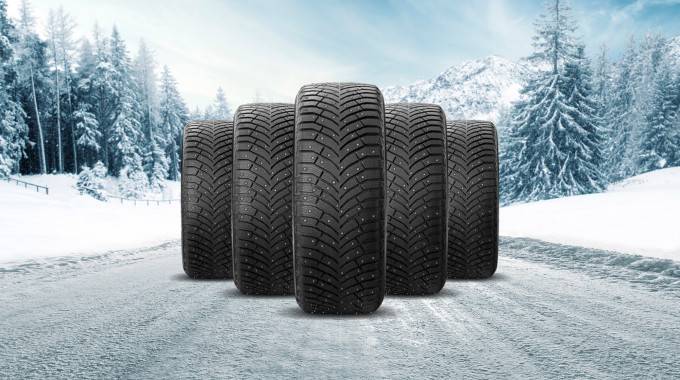
3 Ways to Lower Your Stress Levels During Winter Driving
For many motorists, driving can be stressful—especially when the winter travel season sets in and throws even more challenges their way. Cold temperatures, slippery roads, reduced daylight driving hours and wild weather fluctuations can eat away at confidence, increase driver discomfort, and make driving more mentally intensive.
All of this can result in a snowball effect of factors that contribute to a killer at the wheel: stress.
And while just over sixty percent of Canadians believe they are above-average winter weather drivers compared to others on the road, according to our recent Canada Drives survey, managing stress and anxiety on those icy, slippery shared roads remains imperative, no matter your driving skill level or how winter-ready your vehicle may be.
Below, let's look at 3 of the best ways to help lower stress levels during wintertime driving to ensure you reach your destination safely, comfortably, and with as little stress as possible.
Prepare yourself
Winter is hard on you, and it’s hard on your car, too. Driving in winter weather will put your battery, lights, wipers, tires, and eyes to the test. Thankfully, being prepared for some of the most common wintertime challenges and setbacks can go a long way towards increasing confidence and decreasing stress levels.
Start with the most important part of the equation: the driver (that’s you!).
An upright and alert seating position
Prepare yourself for winter driving by ensuring your seating position is alert and upright, and allows you to comfortably see far up the road with your nose pointed out the windshield, not down towards the steering wheel.
A slight adjustment to your seating position can make it more comfortable to sit with your head upright and eyes far up the road. This makes it easier to gather quality information about your surroundings and provide more reaction time in case of a hazard up the highway.
Keep your eyes far up the road
Another benefit? Keeping your eyes far up the road visually slows the rate at which the scenery comes at you. The farther up the road you look, the slower everything in your field of view moves. It’s an easy, simple way for drivers to be kind to themselves, see more comfortably, and lower stress levels.
Be kind to your eyes, too. An important tip we also outline in our nighttime safety driving story.
Avoiding excessive screen time the night before a long drive and wearing a quality set of polarized driving glasses during the day can both help reduce eye fatigue drastically, especially when long drives stretch into the after-dark hours.
Prepare your car
Several steps are key in preparing your car for winter driving, which reduces stress levels by increasing driver confidence that they’re prepared for any situation.
Winter tires
One of the ultimate wintertime stress busters is a set of quality winter tires from a reputable brand. Here’s our winter tire guide with more helpful tips.
Not only do winter tires ensure you’ll enjoy the best possible performance from the safety and handling features of your car or truck, they also make it much easier for the driver to control their vehicle safely, reducing mental bandwidth and driver workload when the going gets slippery.
With proper winter tires mounted, you’ll have far fewer stressful moments when driving in inclement winter weather.
Portable booster pack or jump starter
Keeping a portable booster pack or jump starter in your car or truck is a great idea, too. Cold temperatures are hard on your vehicle’s battery, making a no-start situation more likely when the mercury drops.
Modern cars are harder than ever on their batteries, too. Knowing you’ve got a fully-charged and functional booster pack on board can reduce stress levels in the event of a dead battery, since you won’t need to track down a donor vehicle and jumper cables to get moving again.
However, if you don't have a portable booster but do have some jumper cables and doner car available, here's our simple guide to boost your car like a pro.
Traction-enhancing ramps or straps
Consider keeping a set of traction-enhancing ramps or straps in your vehicle in case you get stuck, as well as a collapsible shovel, and some sand and salt for traction.
DIY emergency kit with the essentials
Warm clothing, a flashlight, gloves, blanket, food and candles can all be fitted into a small box or container to create an emergency kit in case of a wintertime breakdown on the go.
Knowing you’re prepared for whatever winter throws your way is a great way to keep stress levels to a minimum. We outline 9 must-have emergency kit items here.
Following distance
Following too closely is a nasty habit that could cause a serious accident, especially in wintertime.
Following too closely to the next vehicle in traffic, especially on the highway, blocks your view of the motoring environment ahead of you, limits your ability to read the surface of the road for danger like potholes and black ice, and reduces your ability to experience a smooth drive, as you’ll need to brake, speed up, and adjust your vehicle’s speed more often.
Have you ever found yourself startled or angry at sudden braking from the vehicle you’re following in traffic? Frustrated because the car in front of you keeps braking? Irritated that you can’t see around the giant SUV in front of you? If so, you’re following too closely, and you need to leave more space.
Keeping a generous following distance at all times ensures you’ll have fewer surprises, more time to react to them, and a smoother and more relaxing drive. As an added bonus, you’ll experience reduced fuel consumption and braking component wear.
There you have it, a few simple ways to reduce stress and build confidence on the road during the winter season. To build even more confidence behind the wheel, here are 6 tips for safe winter driving.







